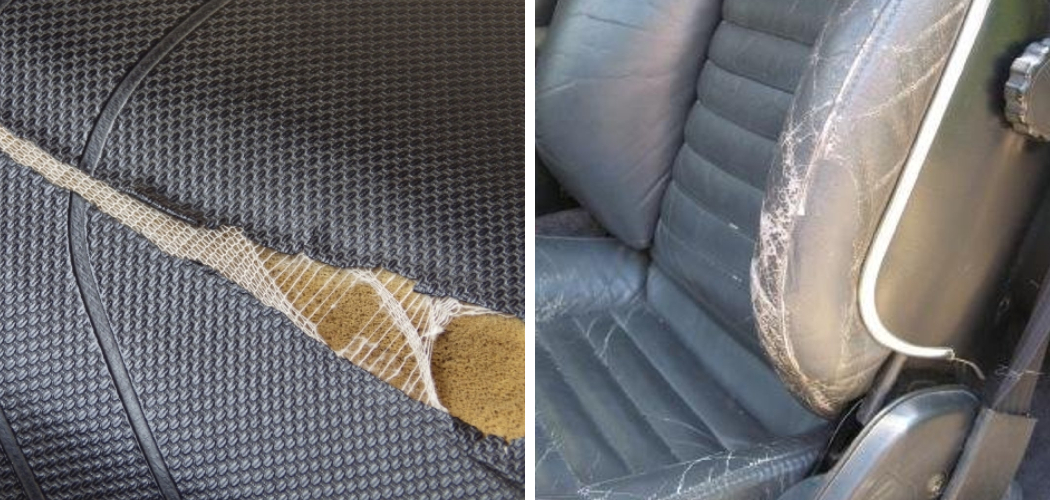Are you tired of dealing with worn-out and faded car interiors? If so, don’t fret – you are in the right place!
There are a few different ways to fix car interior leather depending on the extent of the damage. If the leather is just cracked, a little leather conditioner can help soften and moisturize it, making the cracks less visible.
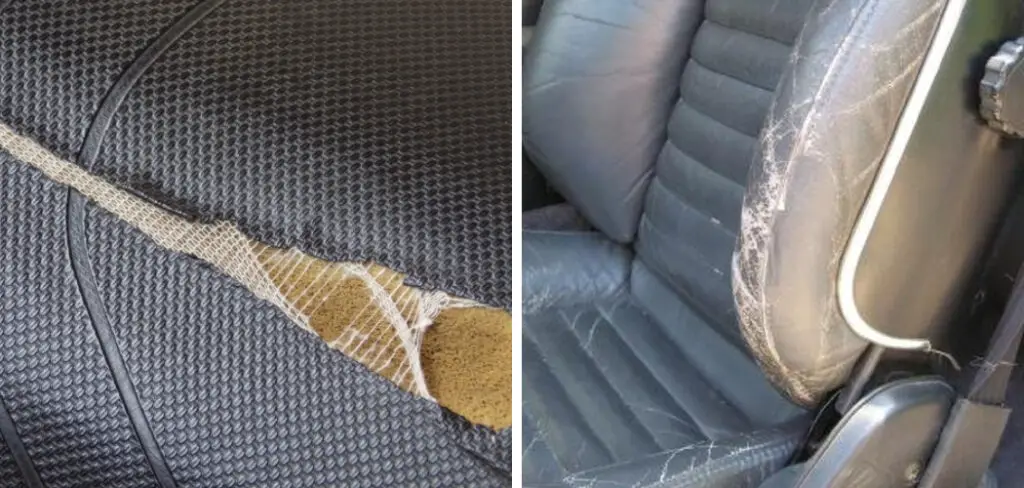
However, re-dying or re-upholstering may be necessary if the leather is severely damaged. In either case, it’s important to take care of any tears or holes as soon as possible to prevent further damage.
In this blog post, we’ll outline some simple steps you can take to know how to fix car interior leather. By following these simple steps, you can keep your car’s interior looking good as new for years to come. So read on and get started!
What Are the Common Issues That Damage Car Interiors?
Several issues can cause damage to car interiors, including exposure to sunlight and heat, spills or accidents, regular use and wear and tear, and so on. Generally speaking, the best way to protect your car interior from damage is to be mindful of how you use it – avoiding harsh chemicals or abrasive cleaners, being careful not to let spills set, and keeping your car interior clean and well-maintained.
That said, even if you take great care of your car’s interior, it may still become worn or damaged over time. In this case, there are several steps that you can take to either repair or restore the leather, including using a leather conditioner, re-dying the leather, or having it professionally upholstered or reupholstered.
What Will You Need?
Before you get started, there are a few supplies that you will likely need for fixing car interior leather. These may include:
- Leather conditioner or moisturizer
- A soft cloth or sponge for applying the conditioner
- Sandpaper (if needed)
- Dye remover and/or leather dye (depending on how severe the damage is)
- Professional upholsterer or leather repair kit (for more severe damage)
- Scissors, tweezers, or other small tools for repairing tears or holes in the leather
- Glue, tape, or other adhesive materials for patching over any damaged areas
As you can see, while repairing car interiors may seem daunting, it is quite easy with the right tools and guidance. So don’t let your car’s interior be damaged – follow these simple steps to fix car interior leather today!
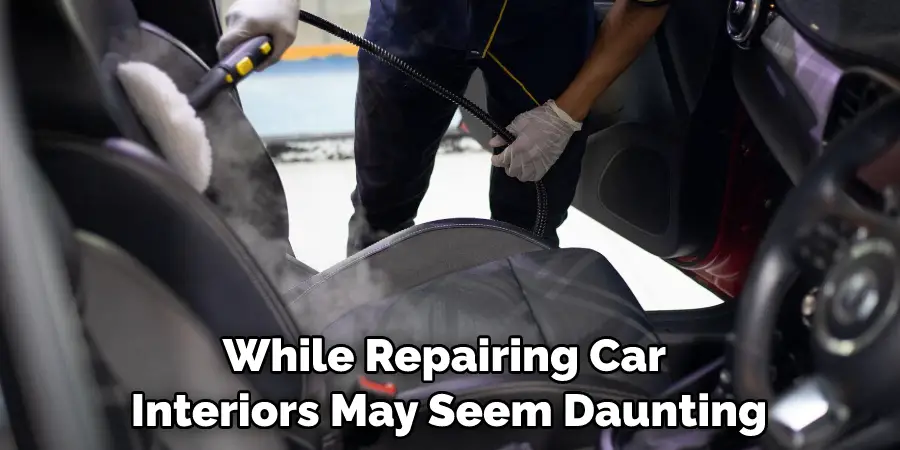
10 Easy Steps on How to Fix Car Interior Leather
Step 1: Clean the Leather Surface
Before you begin any repairs or restorations, it’s important to ensure that the leather surface is clean and free of dirt, dust, and other debris. Use a soft cloth or sponge to apply a gentle leather cleaner or moisturizer to the affected area. Be careful not to use too much, as this can actually make any damage worse.
Step 2: Sand Away Cracks or Deeper Damage
If the leather is cracked or significantly damaged, you may need some sandpaper or other abrasive material to sand away the most severe damage gently. Be sure to take your time. And be gentle, as you don’t want to damage the leather surface further.
Step 3: Apply Leather Conditioner
Once the surface is clean and lightly abraded, apply a small amount of leather conditioner with your cloth or sponge. This can help moisturize and soften any dried-out or cracked interior areas. Also, making them less visible and more comfortable for you and your passengers.
Step 4: Consider Re-dying or Reupholstering
If the damage to your car’s interior is too severe to be easily repaired, you may need to consider re-dying or reupholstering the leather altogether. To do this, work with a professional upholsterer or consult a leather repair kit for detailed instructions on how to proceed.
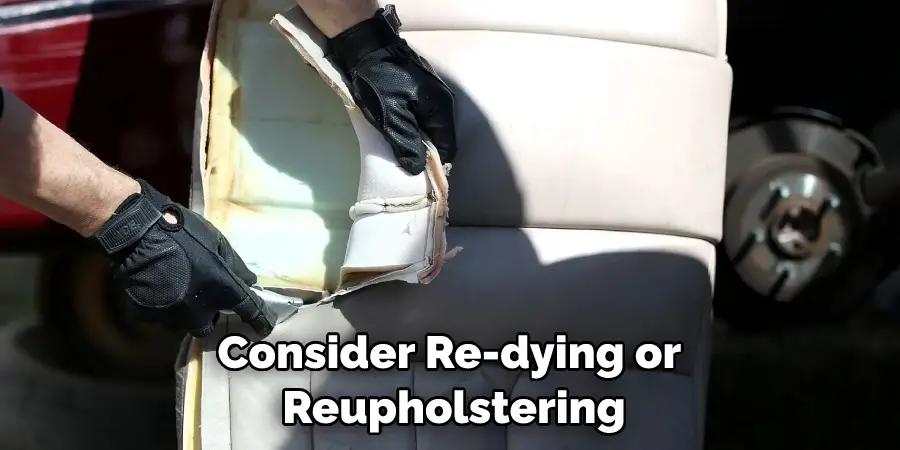
Step 5: Patch Any Damaged Areas
If there are any tears or holes in the leather surface, carefully cut out pieces of matching fabric (such as from an old t-shirt) and use adhesive materials like glue or tape to patch over these areas. This can help disguise and conceal any damage, helping your car’s interior look good as new once again.
Step 6: Keep Your Car Interior Clean
To keep your car interior looking its best and prevent future damage, be sure to regularly clean and maintain the leather surface. This can include vacuuming or wiping down the seats and using a gentle cleaner or conditioner regularly. Make sure to follow the specific instructions that come with your cleaning products, as using too much or too little can cause damage.
Step 7: Consider Professional Assistance
Suppose your car’s interior has become severely damaged or worn over time. In that case, it may be best to consult with a professional upholsterer or leather repair technician for additional guidance and assistance. These experts can help assess the damage and recommend the best course of action. Don’t hesitate to reach out for help if needed.
Step 8: Stay Mindful of Your Habits
Finally, remember that how you use your car can have a big impact on its interior – from how often you drive it to how much wear and tear it experiences daily. If you tend to eat, drink, or smoke inside your vehicle, be sure to take extra care of the leather surface. It’s also a good idea to keep any sharp items or materials away from the car, as these can cause lasting damage.
Step 9: Be Patient and Persistent
Repairing car interiors takes time and patience, so be sure to set aside enough time to focus on the task at hand. Additionally, it’s important to take your time and pay close attention to detail as you work. As this can help ensure that your repairs are done correctly and effectively.
Step 10: Enjoy Your Beautiful Car Interior!
With the right tools and guidance, fixing car interior leather can be a quick and easy process. So take some time to care for your vehicle today. You’ll be glad you did when you step inside your beautiful, well-maintained car once again.
Following these steps can help you repair and care for your car’s leather interior, ensuring that it looks great and functions properly for years to come. Best of luck!
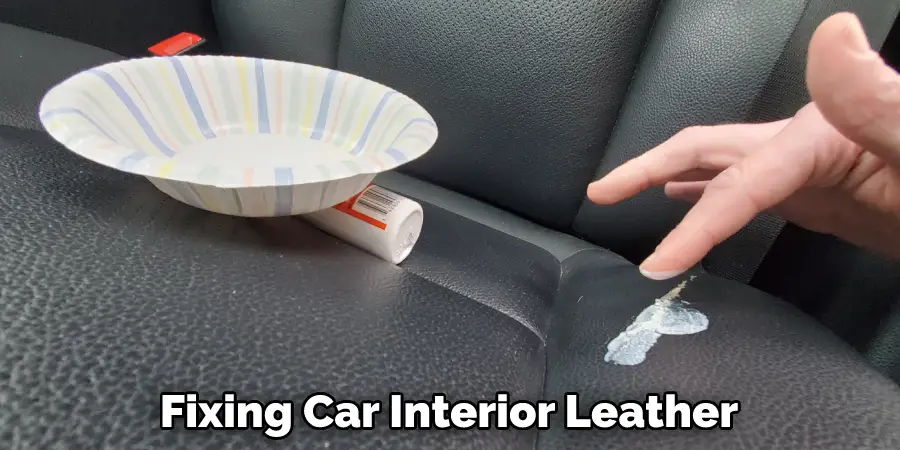
5 Additional Tips and Tricks
1. Before attempting to fix any damage or wear on your car’s interior leather, it is important to assess the damage’s extent and severity.
2. If any of the leather has become loose or detached from the seat frame, it is usually best to contact a professional for assistance.
3. If you can tackle minor scuffs and scratches on your own, using a soft-bristled brush or damp cloth can often help gently remove these marks.
4. If you are dealing with larger or deeper scuffs, it may be necessary to use a leather repair kit that is designed specifically for car interiors.
5. Regardless of how you address the damage, follow all instructions and safety precautions carefully, as mishandling can lead to further damage.
Whether you are dealing with small scuffs and scratches or more severe damage, knowing how to fix car interior leather is essential to keeping your vehicle looking and feeling great. With these simple tips, you can easily keep your car’s interior in top condition, no matter how often you use it.
5 Precautions You Can Take:
1. Be sure to inspect the condition of your car’s leather interior regularly, looking for cracks or other signs of wear and tear.
2. To prevent stains, try to avoid eating or drinking inside your car, especially if you have young children or pets who may leave crumbs and spills behind.
3. To protect your leather from fading, avoid exposing it to direct sunlight or other harsh UV rays for extended periods of time.
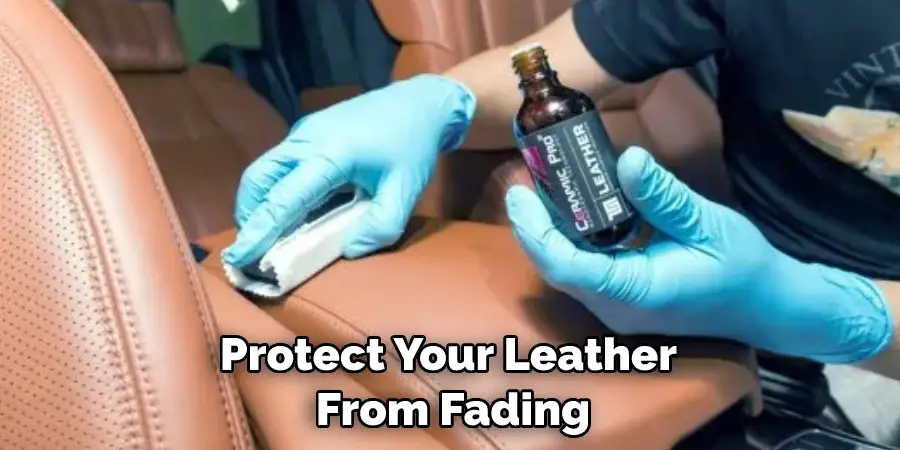
4. Avoid touching your leather upholstery with greasy or oily hands, as this can lead to permanent staining.
5. Use sticky tape to remove any minor stains that may develop over time. If the stain persists after removing the sticky tape, seek professional help.
These are some simple precautions that you can take to help keep your car’s leather interior looking and feeling great for years to come.
Frequently Asked Questions
Can You Fix Damaged Leather Car Seats?
Leather car seats are a durable and luxurious option for many families. However, they can also be susceptible to damage. If your car seat is damaged, there are a few things you can do to fix it.
First, identify the damage. Leather is a tough material, but it can be damaged if it’s exposed to water, oil, or other chemicals. If you notice any water or oil stains on the leather, or if the leather is tearing or bubbling, then your car seat may be damaged.
Next, determine the extent of the damage. If the leather is just wet and has some mildewing, you can try cleaning it with a damp cloth and soap. If the leather is severely torn or heavily stained, you’ll need to replace it.
If you have a car seat that’s not covered by warranty, you can still try to fix it yourself. However, be prepared to spend some time and money on repairs.
What Kind of Glue to Use on Leather Car Seats?
There are a few different types of glue that can be used to attach leather car seats to a vehicle. Each type of glue has its own advantages and disadvantages, so it is important to choose the right glue for the job. Some of the most common types of glue used for this purpose include:
1. Glue gun or adhesive
2. Sticky back adhesive
3. Vinyl adhesive
4. Silicone adhesive
Each of these types of glue has its own benefits and drawbacks, so it is important to choose the right one for the particular project. For example, a sticky back adhesive is good for attaching leather car seats to a vehicle quickly and easily, but it may not be as durable as other types of adhesives. The vinyl adhesive is a good choice for projects that require a long lifespan, like attaching leather car seats to a vehicle for years on end, but it is less likely to stick well to rough surfaces. Silicone adhesive is a hybrid between vinyl and sticky back adhesives and is generally considered to be the best option for attaching leather car seats to a vehicle securely and evenly. It is also easy to remove if necessary, making it ideal for projects that require frequent updates or changes.
Is Peeling Leather Repairable?
Leather is a durable material, but it can eventually start to peel. Peeling can occur due to a variety of reasons, including exposure to sunlight or rain, exposure to chemicals or pollutants, wearing the leather in an incorrect manner, and age.
Leather peeling can be repaired by treating the affected area with a leather conditioner or cream. These products contain ingredients that help restore the surface layer of the leather, preventing future peeling.
How Can I Make My Car Leather Look New Again?
You can make your car’s leather look new again by treating it with a professional leather treatment. This will help to restore the leather’s original shine and protect it from future damage. There are a variety of different leather treatments available, each with its own benefits and drawbacks. Before choosing a treatment, it is important to consider the type of leather and the condition of the surface. Some common leather treatments include:
1. Shampooing: This is the simplest option and is suitable for use on matte or semi-matte leathers that do not require any special preparation. It simply involves washing the leather with a mild soap solution, rinsing well, and drying thoroughly.
2. Conditioning: Conditioning treatments work best on top-coated or fully-coated leathers that have been treated with a sealant or lacquer. They involve applying a treatment agent to the surface of the leather, which will either penetrate the coating or work as a sealant. Once applied, the agent will begin to break down the sealant or lacquer, restoring suppleness and flexibility to the surface.
3. Waxing: Waxing is similar to conditioning in that it works to restore suppleness and flexibility to the surface of the leather. However, waxing is more intensive – it requires the removal of all of the wax residue, which can be done using a cloth, wax scraper, or a machine.
Conclusion
Leather is a luxurious car interior material that must be properly cleaned and maintained to prevent damage. Without proper care, leather can become cracked, dry, and stained. Cleaning your car’s leather seats regularly with the right products will help keep them looking new for years to come.
There you have it – our top tips on how to fix car interior leather! If your seats are looking a little worse for wear, we hope that this article has given you the inspiration and confidence to give them a new lease on life.
Remember, it’s important to patch test any products before using them on your seats, and always follow the instructions carefully. We wish you the best of luck in sprucing up your car’s interior!

